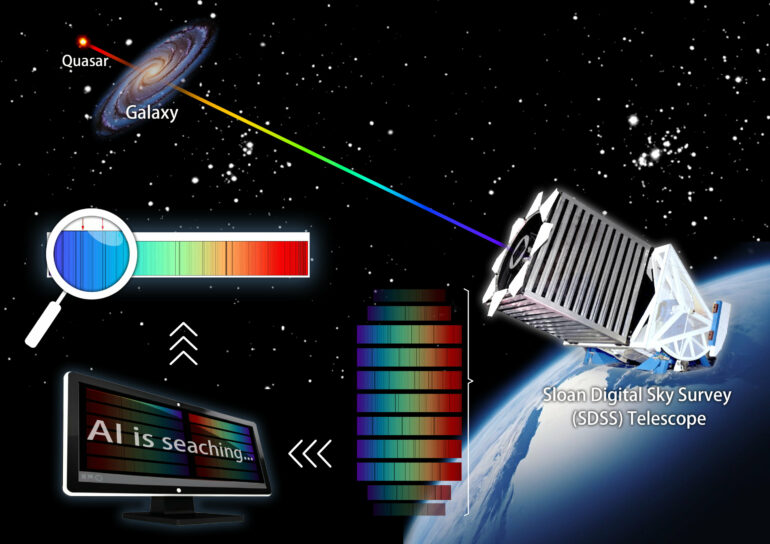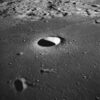Recently, an international team led by Prof. Ge Jian from the Shanghai Astronomical Observatory of the Chinese Academy of Sciences conducted a search for rare weak signals in quasar spectral data released by the Sloan Digital Sky Survey III (SDSS-III) program using deep learning neural networks.
By introducing a new method to explore galaxy formation and evolution, the team showcased the potential of artificial intelligence (AI) in identifying rare weak signals in astronomical big data. The study was published in Monthly Notices of the Royal Astronomical Society.
“Neutral carbon absorbers” from cold gas with dust in the universe serve as crucial probes for studying galaxy formation and evolution. However, the signals of neutral carbon absorption lines are weak and extremely rare.
Astronomers have struggled to detect these absorbers in massive quasar spectral datasets using conventional correlation methods. “It’s like looking for a needle in a haystack,” said Prof. Ge.
In 2015, 66 neutral carbon absorbers were discovered in the spectra of tens of thousands of quasars released earlier by SDSS, which is the largest number of samples obtained.
In this study, Prof. Ge’s team designed and trained deep neural networks with a large number of simulated samples of neutral carbon absorption lines based on actual observations. By applying these well-trained neural networks to the SDSS-III data, the team discovered 107 extremely rare neutral carbon absorbers, doubling the number of the samples obtained in 2015, and detected more faint signals than before.
By stacking the spectra of numerous neutral carbon absorbers, the team significantly enhanced the ability to detect the abundance of various elements and directly measured metal loss in gas caused by dust.
The results indicated that these early galaxies, containing neutral carbon absorber probes, have undergone rapid physical and chemical evolution when the universe was only about three billion years old (the current age of the universe is 13.8 billion). These galaxies were entering a state of evolution between the Large Magellanic Cloud (LMC) and the Milky Way (MW), producing a substantial amount of metals, some of which bonded to form dust particles, leading to the observed effect of dust reddening.
This discovery independently corroborates recent findings by the James Webb Space Telescope (JWST) which detected diamond-like carbon dust in the earliest stars in the universe, suggesting that some galaxies evolve much faster than previously expected, challenging existing models of galaxy formation and evolution.
Unlike the JWST which conducts research through galaxy emission spectra, this study investigates early galaxies by observing the absorption spectra of quasars. Applying well-trained neural networks to find neutral carbon absorbers provides a new tool for future research on the early evolution of the universe and galaxies, complementing the JWST’s research methods.
“It is necessary to develop innovative AI algorithms that can quickly, accurately, and comprehensively explore rare and weak signals in massive astronomical data,” said Prof. Ge.
The team aims to promote the method introduced in this study to image recognition by extracting multiple related structures to create artificial “multi-structure” images for efficient training and detection of faint image signals.
More information:
Jian Ge et al, Detecting rare neutral atomic-carbon absorbers with a deep neural network, Monthly Notices of the Royal Astronomical Society (2024). DOI: 10.1093/mnras/stae799
Provided by
Chinese Academy of Sciences
Citation:
Astronomers detect rare neutral atomic-carbon absorbers with deep neural network (2024, May 17)



